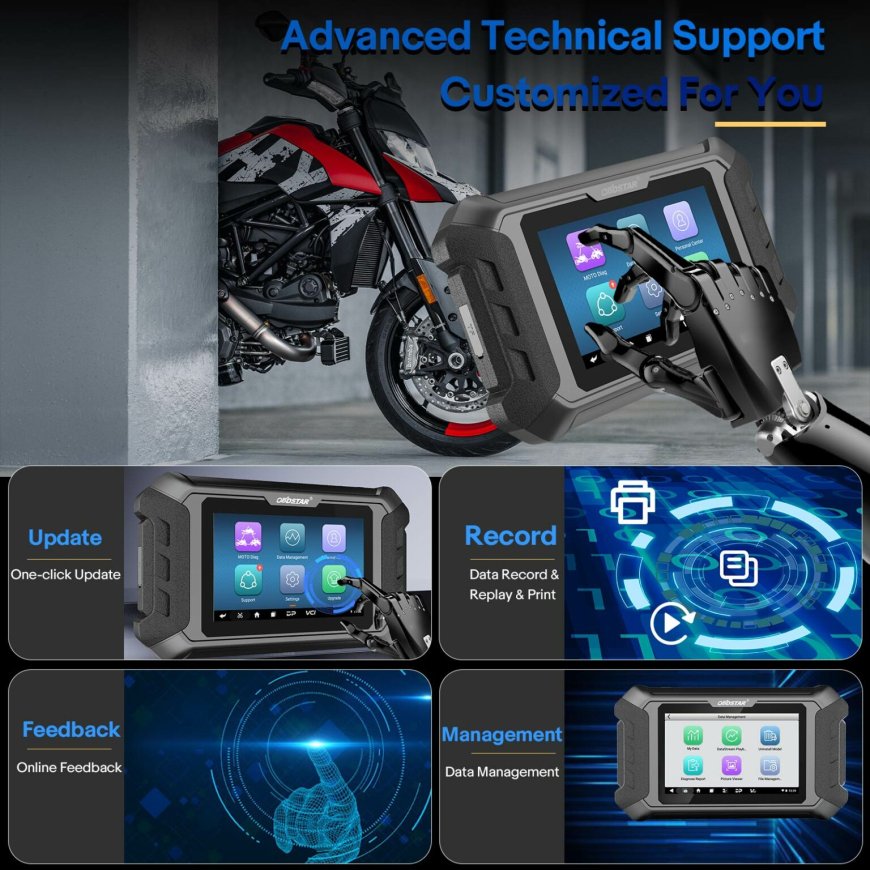Comprehensive Guide to Motorcycle Maintenance and Repair

Motorcycle maintenance and repairs is essential to ensure optimal performance, safety, and longevity of your bike. Regular upkeep not only enhances your riding experience but also helps prevent costly repairs down the road. For both new riders and seasoned enthusiasts, understanding how to properly maintain and repair a motorcycle is invaluable. This guide provides a thorough breakdown of motorcycle maintenance, including routine checkups, basic repairs, and tips for keeping your bike in peak condition.
1. Importance of Regular Motorcycle Maintenance
Motorcycles, like any mechanical machine, are prone to wear and tear. Neglecting basic maintenance can lead to reduced performance, safety hazards, and more expensive repairs. Regular upkeep has several benefits:
- Safety: A well-maintained bike is less likely to experience mechanical failures, keeping you safe on the road.
- Performance: Routine care ensures the engine, brakes, and other components function smoothly, providing a better riding experience.
- Longevity: Proper maintenance extends the life of your motorcycle, reducing the need for frequent replacements.
Understanding how to keep your bike in good working order can save you time, money, and ensure a longer lifespan for your motorcycle.
2. Routine Maintenance Checklist
While professional servicing is essential for some tasks, there are many basic maintenance steps you can perform at home. Below is a checklist of routine tasks that should be carried out to maintain your motorcycle in good condition.
A. Check the Oil and Fluids
Oil is the lifeblood of your motorcycle. Regular oil changes are crucial to maintaining engine performance and preventing wear. Follow these guidelines:
- Oil Change: Change the oil every 3,000 to 5,000 miles or as recommended in the manufacturer’s manual. Fresh oil ensures smooth engine operation and reduces friction.
- Check the Oil Level: Periodically check the oil level using the dipstick. Ensure the oil level is within the recommended range to avoid engine damage.
- Transmission and Brake Fluids: Monitor these levels regularly. Transmission and brake fluids degrade over time and can affect shifting and braking if not topped off or replaced as needed.
B. Inspect Tires
Tires are critical for both performance and safety. Regularly inspect the tires for wear, cracks, and proper inflation:
- Tire Pressure: Check the tire pressure before every ride using a tire gauge. Under-inflated or over-inflated tires can lead to poor handling and increase the risk of accidents.
- Tread Depth: Replace tires when the tread depth reaches the minimum threshold. A worn-out tire has less grip, increasing the risk of skidding.
- Signs of Damage: Look for cracks, punctures, or other signs of damage. Replace damaged tires immediately.
C. Brake System Maintenance
The brake system is one of the most important safety features on your motorcycle. A malfunctioning brake can be deadly, so regular maintenance is critical:
- Brake Pads: Inspect the brake pads for wear. Worn-out brake pads reduce braking efficiency and can damage the brake rotors. Replace them if they are too thin.
- Brake Fluid: Check brake fluid levels and condition regularly. If the fluid appears dirty or levels are low, top off or replace the fluid to ensure proper brake performance.
- Brake Lines: Look for leaks or signs of wear on brake lines. Replace damaged brake lines immediately.
D. Chain Maintenance
The chain is responsible for transferring power from the engine to the rear wheel, making it a crucial component of the drivetrain:
- Lubrication: Regularly lubricate the chain to prevent rust and ensure smooth operation. Use a high-quality chain lubricant and apply it after every ride or at least once every 500 miles.
- Chain Tension: Check the chain tension periodically. A loose chain can slip off, while an overly tight chain can strain the engine and wear out components faster. Adjust it according to the manufacturer’s specifications.
- Inspect for Wear: Replace the chain if you notice significant wear or elongation.
E. Battery Care
The motorcycle battery is essential for starting the engine and powering electrical components like lights and indicators:
- Charge the Battery: Keep the battery charged, especially if you store your motorcycle for long periods. Use a trickle charger to maintain a steady charge.
- Inspect for Corrosion: Check the battery terminals for signs of corrosion. Clean the terminals and apply dielectric grease to prevent further corrosion.
- Replace When Necessary: Replace the battery if it struggles to hold a charge or shows signs of weakness.
F. Air Filter Cleaning and Replacement
The air filter prevents dust and debris from entering the engine. A clogged filter reduces engine performance and fuel efficiency:
- Clean the Air Filter: If your bike has a reusable filter, clean it periodically according to the manufacturer’s instructions. A clean air filter ensures optimal air intake and engine performance.
- Replace When Dirty: If the filter is disposable, replace it when it becomes dirty or clogged. Neglecting this can lead to engine damage over time.
3. Basic Motorcycle Repairs
In addition to regular maintenance, there are a few basic repair skills that every motorcycle owner should learn. These include fixing common issues that can arise during everyday use.
A. Fixing a Flat Tire
A flat tire can happen at any time, but with the right tools, it’s a relatively easy fix:
- Tools Needed: Tire patch kit, tire irons, and an air pump.
- Steps:
- Remove the wheel from the bike.
- Use tire irons to remove the tire from the rim.
- Patch the puncture or replace the inner tube.
- Reinstall the tire on the rim and inflate it.
B. Changing Spark Plugs
Spark plugs are critical for ignition and engine performance. Replacing old or fouled spark plugs can restore lost power:
- Tools Needed: Spark plug socket and wrench.
- Steps:
- Remove the old spark plug using the socket.
- Check for any signs of fouling or wear.
- Install the new spark plug and tighten it snugly.
C. Adjusting the Clutch Cable
Over time, clutch cables can stretch, causing difficulty in shifting gears. Adjusting the clutch cable is a simple task:
- Steps:
- Locate the clutch adjuster near the handlebar or engine.
- Turn the adjuster until there is a small amount of free play in the clutch lever.
- Test the clutch to ensure smooth operation.
4. Preventive Maintenance Tips
Aside from routine maintenance, adopting a few preventive practices can help you avoid major issues down the line:
- Ride Smoothly: Avoid aggressive acceleration and braking, as these can cause undue stress on the engine, brakes, and tires.
- Store Properly: If you store your bike for long periods, keep it in a dry, sheltered place and use a cover. Add fuel stabilizer to prevent the fuel from going bad, and remove the battery if necessary.
- Perform Regular Inspections: Before every ride, conduct a quick inspection of the brakes, tires, lights, and fluid levels. Early detection of issues can prevent serious problems.
5. When to Seek Professional Help
While many maintenance tasks can be done at home, there are situations where professional assistance is required:
- Engine Problems: Complex engine repairs, such as internal component issues or electrical system faults, should be left to professionals.
- Transmission Issues: If your bike is experiencing difficulty shifting gears or slipping out of gear, a mechanic should inspect the transmission system.
- Suspension Repairs: Suspension components require precise adjustments, and improper repairs can affect the bike’s handling.
Conclusion
Motorcycle maintenance and repairs are essential for ensuring safety, performance, and the longevity of your bike. By following this guide, you can keep your motorcycle in excellent condition, handle common issues, and know when to seek professional help. Staying proactive with maintenance will not only enhance your riding experience but also save you from costly repairs in the long run. Whether you're a new rider or a seasoned motorcyclist, taking care of your bike should always be a top priority.
What's Your Reaction?



























